|
|
|
Now, getting back to Schwarzenegger's trip, let's address the question of 'why Israel?' First, we can see that for a 'messianic' figure it would be quite natural to go there... to get 'baptized' (or whatever). Note that the Oak King is 'born' on the winter solstice/Yule, historically associated with Christmas, thus also with the birth of Jesus. In other words, the Oak King is an alter ego of the 'Messiah'. And the acting Oak King, Arnie, just went 'back' to the Holy Land...
But more interestingly, the name 'Israel' comes from a biblical figure who was originally called Jacob. He is associated with something akin to the Tower of Babel (Babylon/'gate of god') or 'stargate', as we read in Genesis:
And Jacob awaked out of his sleep, and he said, Surely the Lord is in this place; and I knew it not. And he was afraid, and said, How dreadful is this place! This is none other but the house of God, and this is the gate of heaven. (28:16-17)
The line 'How dreadful is this place!' is thought to be connected to Rennes-le-Chateau in south France where, at its church's entrance, the visitor would encounter a strange Latin inscription that reads 'TERRIBILIS EST LOCUS ISTE' ('This place is terrible'). Thanks to the great success of The Da Vinci Code, now many people recognize that Rennes-le-Chateau is inseparable from the underground tradition of Mary Magdalene (= 'tower'). Not surprisingly, the subsequent Genesis passages mentions 'pillar':
And Jacob rose up early in the morning, and took the stone that he had put for his pillows, and set it up for a pillar, and poured oil upon the top of it. And he called the name of that place Beth-el... And this stone, which I have set for a pillar, shall be God's house... (28:18-19, 22)
This 'pillar' is easily interchangeable with the Tower of Babel in Babylon, the 'gate of god'. This is a 'stargate' theme. Isn't it intriguing, then, that Schwarzenegger's most popular movie character, the Terminator, is a cyborg that comes from the future through a 'stargate' machine?
This 'stargate' is also traditionally called 'Jacob's ladder', which has been identified with the Milky Way. Those who have read The Lucifer Time Code will recall that the significance accorded to the month of May this year has much to do with celestial configurations directly involving the Milky Way [and its 'stargate' points]!
Jacob's 'stargate' pillar-stone is also associated with the 'Stone of Destiny' which is related to Grail/Arthurian tradition. This reminds us of the fact that Arnold has a shadowy Enron connection (the corrupt energy company that imploded in 2001-2) and 'Enron' spelt backwards is 'Norne', the name of the three goddesses of fate (or destiny) in Norse mythology as discussed before.
Here is one of Nostradamus' quatrains often associated with the 'Antichrist' (I-76) that specifically mentions 'destiny' and alludes to Norne:
The man will be called by a barbaric name
that three sisters will receive from destiny.
He will speak then to a great people in words and deeds,
more than any other man will have fame and renown.
Schwarzenegger indeed has the 'barbaric' epithet, 'Terminator', but before he was the Terminator he was literally Conan the Barbarian!
So, all combined, the symbolism of Arnold's 'presidential' trip to Israel (= Jacob) over the Beltane/May-Day weekend is quite telling and meaningful.
Peak Oil is arriving. Chaos will ensue. And Arnold Schwarzenegger will be right there to assume leadership and forcefully maintain order even as the Titanic sinks into the abyss. A scenario that is becoming less and less improbable...
Okay, one more thing. This week saw a very unusual development of all the major US cable news networks (CNN, MSNBC, FOX) carrying a remarkable story involving UFOs - how they were witnessed and acknowledged by the Mexican military - in a quite serious manner. I see this as a precursor to the coming announcement of the 'discovery' of life on Mars - i.e. my Projection 'A' for May (and beyond).
The way I see it, those 'UFOs' are probably 'ours', as in non-extraterrestrial (something out of very deep military-industrial black projects). I can actually detect a parallel between the Nick Berg video and this UFO news (both came out just about at the same time). The 'shock & awe' video, on a practical level, had the very convenient function of softening the impact of the Iraq prisoner abuse photos. (Who benefited the most from the public display of extreme savagery?) Rumsfeld is certainly feeling less pressure at this time, and Cheney is happy that Rumsfeld still has his job since without him at the top of the Pentagon the neoconservative network that Cheney uses to run his 'shadow government' would quickly collapse.
By showing the extreme, people's threshold of tolerance is easily changed. So, by implying in the mainstream news, at least temporarily, that there may really be ETs visiting this planet in flying saucers, the general public's 'tolerance level' gets adjusted and thereby becoming ready mentally for the 'life on Mars' announcement that may be in the works now.
The fact that the ESA guys (Europe) are apparently getting ready to make such an announcement in July or September this year tells me that NASA/US may now have a motive to make its own 'life on Mars' announcement' before them. Chances are NASA already has more than enough evidence. So why let the Europeans steal the limelight? The limelight outweighs secrecy at this point, I would think.
It will be interesting to see how/if these scenarios will unfold in the coming weeks.
|
|
|
|
|
|
Tranquilos, que nadie se asuste... no vamos a sufrir una invasión de demonios del averno (al menos eso espero  ). Me he permitido la licencia de usar ese titular por un motivo concreto. Hoy, 21 de junio, es la fecha en el hemisferio norte (en el sur ocurre al contrario) del solsticio de verano. Arranca oficialmente la estación más calurosa del año y hoy el día tiene más horas de luz que ningún otro. Como ya comentamos en el blog en su momento, los antiguos romanos contaban entre su nutrido panteón de dioses con la figura de Jano (Janus en latín), el dios de los solsticios. Era también el dios de las puertas, de todos los inicios y de los finales. Poseía una rica iconografía –de la que algún día hablaremos más a fondo–, en la que lo más destacado era su representación con dos rostros, cada uno de ellos mirando en direcciones opuestas. De ahí que se le denomine también como Jano bifronte.
En lo que respecta a la temática de este blog, lo que más nos interesa de él es que los collegia fabrorum (las cofradías de constructores romanos) le rindieron una devoción especial, siendo su patrón.
Como decía más arriba, se consideraba a Jano el dios de los solsticios, las «puertas solsticiales» o «puertas del cielo». Así, el solsticio de verano era llamado janua inferni, la "puerta del infierno" o de los hombres, y el solsticio de invierno, janua coeli, la "puerta de los dioses". Además de patrón de los constructores, Jano era para los romanos el dios de la iniciación a los misterios. Era la «puerta», no sólo solsticial, sino también iniciática.

Esta devoción se transmitió a los canteros medievales y pasó a la iconografía y la religión cristiana bajo el culto a los dos «san Juan»: el Bautista, que tiene su festividad el 24 de junio (solsticio de verano), y el Evangelista, que tiene su festividad el 27 de diciembre (solsticio de invierno). Hay casos muy significativos en este sentido, en los que esta pervivencia es evidente. Jean Hani, profesor emérito en la Universidad de Amiens, menciona un notable ejemplo en la basílica francesa de Saint-Remi, en Reims: «En una vidriera aparece un único san Juan, que engloba en una sola figura al Precursor y al Evangelista, fusión subrayada por la presencia, sobre la cabeza, de dos girasoles (los dos solsticios) dirigidos en sentido opuesto: una especie de Jano cristiano, en suma».
No es el único caso. Otro día hablaremos de la presencia de zodiacos en iglesias y catedrales medievales. Hoy es suficiente con comentar que junto a algunos de estos zodiacos, generalmente esculpidos en las fachadas de los templos, y a ambos lados de Cristo, aparecen en ocasiones los "dos Juanes". Están marcando, de este modo, las fechas de los solsticios. ¿Qué simboliza esto? Como bien explica de nuevo Hani:
Del mismo modo que ellos ‘abren’ los dos períodos de la historia marcados por las dos venidas del Salvador, igualmente, en el plano cósmico, ‘abren’ las dos fases del ciclo anual, símbolo reducido del ciclo universal del tiempo y la historia; y en esta función, han reemplazado, desdoblándolo por así decirlo, al Jano bifronte, del que los Collegia fabrorum, antepasados de los constructores de catedrales, celebraban la fiesta en los dos solsticios.
Además, la división en la janua inferni y la janua coeli aparece también en algunas representaciones medievales del Juicio Final, en las que se divide la escena en dos partes: por un lado, los condenados que van al infierno –descienden, igual que el Sol a partir del solsticio de verano, o janua inferni– y, por otro, aquellos que se salvan –ascienden, al igual que el Sol tras el solsticio de invierno, o janua coeli.
En los templos medievales las representaciones de Jano son bastante habituales –además de los casos mencionados–, sobre todo en los zodiacos. Os pongo las imágenes de varios ejemplos. La primera corresponde a una representación del dios existente en la catedral de Amiens, en una serie de los trabajos de los meses. La segunda y la tercera proceden de la catedral de Chartres, también en Francia. En ésta última imagen Jano –aunque no se aprecia en la fotografía– está rodeado de símbolos del zodiaco.
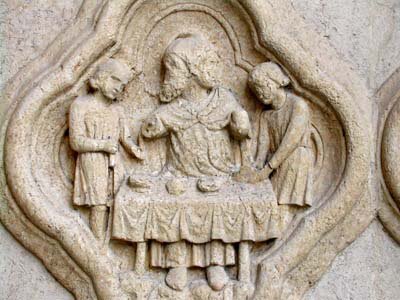


Por supuesto, y como algunos de vosotros ya habréis adivinado, este culto a Jano, y más tarde a los «dos san Juan» en las logias medievales, se conserva en la masonería actual, pues tanto las fiestas solsticiales como los dos «Juanes» tienen gran importancia.·.
Eso es todo. ¡Feliz solsticio! y ¡Feliz noche de San Juan el sábado! (ojito con las hogueras) 
|
|
|
|
|
|
Las puertas solsticiales
Norte y Sur son puntos geográficos que están relacionados a la astrología en el sentido de que corresponden: el norte o invierno a Capricornio y el sur o verano a Cáncer, los dos solsticios; en tanto que en el este o primavera se situará a Aries y en el oeste u otoño a Libra, los dos equinoccios. Estos signos astrológicamente pertenecen a un elemento: Capricornio a la tierra, Cáncer al agua, Aries al fuego y Libra al aire, entre otras relaciones que tienen que ver con el cuaternario.
Para la explicación y las variadas correspondencias con la simbólica de las dos puertas zodiacales ubicadas al norte y al sur, es decir, referidas a los solsticios, podría ser adecuado retomar algunos planteamientos de la obra de René Guénon y que están estrechamente vinculados a la entrada y salida del Templo, denominándose en varias doctrinas respectivamente como “la puerta de los hombres” y “la puerta de los dioses”. La primera corresponde, como hemos ya dicho, al solsticio de verano y al signo de Cáncer, en tanto, que la segunda será la del solsticio de invierno y del signo de Capricornio. En el simbolismo constructivo se les vincula, respectivamente, con la puerta del templo y la apertura situada en la cúpula donde se coloca la piedra de toque, forzosamente desde afuera del templo.
Retomando el simbolismo astrológico, el ciclo anual podemos ver se “divide” en dos mitades: una etapa descendente y otra ascendente, en la primera el sol va hacia el norte, se encamina hacia el solsticio de invierno y en la segunda el sol va hacia el sur, o sea, rumbo al solsticio de verano. En la tradición hindú la fase ascendente se relaciona con el deva-yna (vía de los dioses) y la descendente con el pitr-yna (vía de los padres o antepasados).
El solsticio de invierno será, por tanto, el polo norte y el solsticio de verano el polo sur, marcando la línea vertical de la rueda en donde al sur le corresponde el mediodía y al norte la medianoche. De ahí el sentido esotérico de que los trabajos iniciáticos comiencen a mediodía y cierren a medianoche, es el lapso para realizar el ritual, saliendo uno del tiempo lineal, uniforme y plano del mundo profano e ingresando a otro tiempo en el que todo se hace de acuerdo al rito y, por ende, al símbolo.
Los dos solsticios marcan, entonces, la división del ciclo anual en dos mitades, una ascendente y otra descendente, que reflejan de alguna manera la ley universal aplicable a todo lo existente, el yin y el yang, sístole y diástole, masculino y femenino, positivo y negativo. Pero también los dos puntos en los cuales se “suspende” el movimiento y por lo tanto el tiempo.
Estas dos puertas solsticiales están vinculadas al simbolismo de Jano. Jano es el ianitor (portero) que abre y cierra las puertas (ianuae) del ciclo anual, con las llaves que son uno de sus principales atributos, la llave como simbolismo axial que lo conecta a Jano con la parte Suprema. Sus dos rostros se consideran como la representación del pasado y el porvenir, sin embargo, entre el pasado que ya no es y el porvenir que no es aún, el verdadero rostro de Jano es aquel que mira el presente, el instante permanentemente frente a nuestros ojos o realidad, que es verdaderamente lo único que nos conforma. En efecto, ese tercer rostro, es invisible porque el presente, en la manifestación temporal, no constituye sino un inaprehensible instante, aunque, nos recuerda Guénon, “cuando el ser se eleva por sobre las condiciones de esta manifestación transitoria y contingente, el presente contiene, al contrario, toda realidad.” A Jano se le conoce también como “el Señor del triple tiempo”.
Este tercer rostro de Jano corresponde, en otro simbolismo, el de la tradición hindú, al ojo frontal de Shiva, invisible también, ojo que figura “el sentido de eternidad”. Jano () ha dado su nombre al mes de enero (), que es aquel con el que abre el año (solsticio de invierno). Jano “Señor del triple tiempo” (atributo igualmente asignado a Shiva), es también, el “Señor de las dos vías”, esas dos vías, de derecha y de izquierda (que los pitagóricos representan con la letra Y -Épsilon-) y que son idénticas al deva-yna y al pitr-yna; y que aquí igualmente, habrá que mencionar, hay una tercera vía no visible que se relaciona precisamente con el tercer rostro de Jano.
Jano era el dios de la iniciación y presidía los Collegia Fabrorum, escuela iniciática vinculada con el ejercicio de las artesanías. Jano era un antiguo dios asirio-babilónico, que para los romanos, precedía todo nacimiento ya sea de los hombres, del cosmos o de las acciones ha emprenderse. Lleva consigo dos llaves y por ello se le relaciona con una deidad de aperturas o de inicios, en el cristianismo las fiestas solsticiales de Jano se han convertido en las de los dos San Juan y estas se celebran siempre en las mismas épocas, es decir, en las postrimerías de los solsticios de invierno y de verano, las llaves de Jano, en la simbólica cristiana, abren y cierran el “Reino de los cielos” y el de la tierra, una llave es de oro y la otra es de plata.
En la sucesión de los antiguos Collegia Fabrorum, igualmente es Guénon al que nos remitimos, se transmitió regularmente a las corporaciones que, a través de todo el medioevo, mantuvieron el mismo carácter iniciático y en especial a la de los constructores. La masonería ha conservado como uno de los testimonios más explícitos de su origen las fiestas solsticiales consagradas a los dos San Juan, después de haberlo estado a los dos rostros de Jano. Estos rostros que marcan ciclos y tiempos específicos señalan, en su lado izquierdo el pasado, quizás recordando que en una primera etapa los iniciados deben de tomar conciencia de lo que se requiere cambiar u operar en la construcción de su templo interno. En tanto que el lado derecho corresponde al porvenir y tal vez, hable, entre otras cosas, de lo que está por saberse y aprehenderse.
Estas fiestas que se han celebrado por variadas culturas y pueblos se sitúan en realidad un poco después de la fecha exacta de los solsticios, una vez que el descenso y el ascenso han comenzado; a esto corresponde, en el simbolismo védico, el hecho de que las puertas del Pitr-loka (de los antepasados) y el Deva-loka (de los dioses), se consideren situadas, respectivamente, hacia el sudoeste y el nordeste. Podría decirse, comenta Guénon, con mayor precisión, que “la puerta de los dioses” está situada al norte y vuelta hacia el este y que “la puerta de los hombres” está situada al sur y vuelta hacia el oeste.
Ahora bien, el doble sentido del nombre mismo de Juan es interesante y probablemente relevante para otros: el nombre Yehohanán, puede significar “misericordia de Dios” y también “alabanza de Dios”. El primer concepto se ha vinculado a San Juan Bautista, en tanto que el segundo se le ha designado más frecuentemente a San Juan Evangelista. La misericordia es atributo descendente en tanto que la alabanza requiere de un esfuerzo ascendente. Al Bautista, en la masonería, nos comentan los siete maestros masones en su libro, se le relaciona con la escuadra y el nivel, herramientas indispensables para que la base del edificio a construir este perfectamente allanada y encuadrada, sea esta imagen perfecta del trabajo que nosotros como aprendices hemos de realizar, es decir, la rectificación que cada uno debe ejercer consigo mismo. En tanto al Evangelista, “el águila de Dios” y “el discípulo bien amado” se le considera el apóstol que da testimonio de la luz –del conocimiento– y por ende se le encarga bautizar con el fuego del espíritu. La masonería, nos seguimos refiriendo al mismo libro, le asigna la perpendicular y el compás, y con esto, la posibilidad de trazarnos como instrumentos tales que enlacemos con el eje vertical que va del centro del templo hasta su sumidad más alta donde reside la clave de bóveda.
Hay un símbolo en la masonería (en particular en la anglosajona) que es un círculo entre dos tangentes paralelas, estas tangentes, entre otros significados, representan a los dos San Juan. Estas líneas o marcas, también señalan un límite al ir y venir del sol, son los dos solsticios que nos indican que el sol no puede sobrepasar su curso anual, y también, pueda ser, nos remita al signo correspondiente y al recordatorio que al estar entre columnas no hay que sobrepasarlas. También se le ha dado a estas líneas una relación con las dos columnas del árbol sefirótico y, en su carácter exotérico, se le puede ver como las “columnas de Hércules”, ya que es un héroe solar sosteniendo los dos pilares. Existe una divisa, de nuevo Guénon, que nos dice non plus ultra y que está referida a estas columnas y que, no solamente, expresa o señala los límites del mundo “conocido”.
Como hemos comentado a Jano se le puede observar como el “Señor de la Eternidad”, que probablemente sea uno de sus aspectos más importantes, esto se relaciona con el principio (alfa) y con el fin (omega) de todas las cosas y esto, nos pueda remitir, al evangelio de San Juan que inicia con estas palabras: “En el principio era ya el Verbo, y el Verbo estaba en Dios y el Verbo era Dios. Él estaba en el principio en Dios. Por él fueron hechas todas las cosas: y sin él no se ha hecho cosa alguna de cuantas han sido hechas, en él estaba la vida, y la vida era la luz de los hombres: Y esta luz resplandece en medio de las tinieblas, y las tinieblas no la han recibido” (I, 1-5). O bien la referencia a Cristo como el principio y el fin de todas las cosas, el alfa y el omega. Jano es igualmente “el Señor de las dos vías” por consecuencia inmediata de su carácter de “Señor de Conocimiento”, lo que nos remite de nuevo a la idea de la iniciación de los misterios. Initiatio, nos recuerda Guénon, deriva de in-ire “entrar”, lo que se vincula igualmente con el simbolismo de la puerta y con Jano (Ianus) que contienen la misma raíz que el verbo ire, “ir”; esta raíz se encuentra en sánscrito con el mismo sentido que en latín, es la palabra yna, “vía”, cuya forma esta próxima a la del nombre Ianus, y que faculta la iniciación, initiatio; en el extremo oriente la palabra Tao significa vía, y sirve para designar al Principio Supremo.
Hombre de Mercurio
|
|
|
|
|
|
|
You are right, thanks, this is the standard for the archbishops, anyway what mattered there was the tetractys, so lets analize Pope Ratzinger coat of arms.  On the left we can see Cassiopeia the black Queen of Ethiopia - In Greek means burned face one - encrypts fire on Cassiopeia constellation. To the right the big bear of Arcadia - Ursa Major - the bear bears our cube and pillar Boaz our B-US, number 6 domain - counterclockwise. The Shell symbolizes the growing interaction of 9-6 spirals, between both constellations. The silver key the gate of man in Taurus, and the gold key the gate of the Gods in Ophihchus , between Sagitarius and Scorpius. 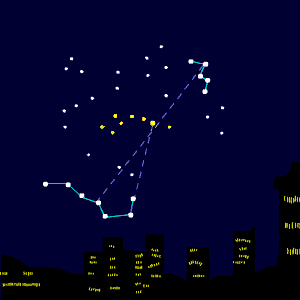 A circumpolar star is a star that, as viewed from a given latitude on Earth, never sets (that is, never disappears below the horizon), due to its proximity to one of the celestial poles. Circumpolar stars are therefore visible from said location towards nearest pole for the entire night on every night of the year (and would be continuously visible throughout the day too, were they not overwhelmed by the Sun's glare). All circumpolar stars are within the circumpolar circle. This was in fact the original meaning of "Arctic Circle", before the current geographical meaning, meaning "Circle of the Bears" (Ursa Major, the Great Bear; and Ursa Minor, the Little Bear), from Greek αρκτικός (arktikos), "near the Bear", from the word άρκτος (arktos) bear.   Whitney Houston as the black Queen of Ethiopia - killed 2 - 11 - 2 = B = Boaz 11 = Solar system coordinates  Number 2 under Boaz, Capricorn constellation - the goat and Devil symbol |
|
|
|
|
The Italian Crop circles "Riva presso Chieri"  June 2010, supposedly is encoded as well with ASCII decimal code of E=MC2 in the outer parts the inner circles are supposedly the lunar cycle over a period of 6 months. And some even think the star in the middle is our sun and the outer circles are our nearest stars. and the other Italian cropcircle  June 20, 2011 in Poirino, Italy. According to analysis of various people, the outer rim of the circle contains the name ‘Enki Ea’ The name ‘Enki Ea’ is of an ancient Sumerian god, said to be a tall, blonde, and extra-terrestrial. And its said the formation has the name of this god encoded in the outer rim of the formation using 8-bit ASCII code. Ea Enki is an Akadian god from Summeria http://www.cropcircleconnector.com/inter2011/italy/Poirino2011a.htmlSome analysis of the crop circle23 circles on the tips of the star make the number 161 (23x7). 161x161 is 25,921, the exact number on the precession of the equinoxes. The crop, therefore, indicates the end of our era precessional. The large dot is on number 21 (refer to December 21, 2012?). It is also found in the tip relative to the constellation of Pegasus which, incidentally, refers to the god EnkiPegasus is a constellation in the northern sky, named after the winged horse Pegasus in Greek mythology  within this constellation is the square of Perseus which contains Andromeda 51 Pegasi, a star in this constellation, is the first Sun-like star known to have an extrasolar planet. IK Pegasi is the nearest supernova candidate. Spectroscopic analysis of HD 209458 b, an extrasolar planet in this constellation has provided the first evidence of atmospheric water vapor beyond the solar system, while extrasolar planets orbiting the star HR 8799 also in Pegasus are the first to be directly imaged. Pegasus flew Perseus son of Zeus) to save the beautiful Adromeda http://en.wikipedia.org/wiki/Pegasus_%28constellation%29According to ancient legends, he and Innanna created modern humans by hybridizing sperm from the male gods with eggs taken from local aboriginals, already living on Earth tens of thousands of years ago. Cheval de Dieu Horse of God Delacroix 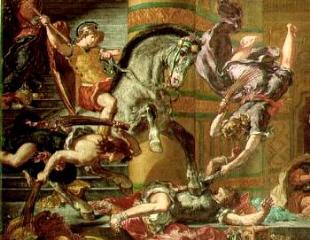 found in the chapel of the Angels at Saint Sulpice done in 1861 A connection at Rennes with the Summerians is the pine cone...
|
|
|
|
|
Peter Dawkins This midsummer period, 20-24 June 2012, is of exceptional importance for the world. It forms the midpoint or middle pillar of the Royal Arch Gateway to the Golden Age, the side pillars ('Great Pillars') http://www.peterdawkins.com/http://watch.pair.com/cancer-antichrist.htmlPeter Dawkins is a recognized authority on the Baconian-Rosicrucian philosophies and Ancient Wisdom teachings. He is the author of the Francis Bacon Research Trust Journal Series, Studies in Ancient Wisdom, whose purpose is "to give insight into the complete initiatory path that all the great Religions or Wisdom Traditions have taught from time immemorial, as being the Way, the Truth and the Life." (889:12) Volume 5 of Dawkins' series, Arcadia: The Ancient Egyptian Mysteries, reveals to the 'initiated' the esoteric meaning of the 'Great Bear' and 'Little Bear'. Dawkins promotes the same twaddle as Bullinger and Kennedy about the Bear really being a Sheepfold; however, because he is writing to esotericists, Dawkins discloses its deeper significance—that the Sheepfold is the "heavenly place of enlightenment" to which the initiates of mankind (sheep) are led, presumably by the adepts and masters who are their "shepherds". "Associated in esoteric knowledge with this role of high kingship is the symbol of the North Pole Star - the 'crown of the world - and the circumpolar constellations. Of these, the Lesser and the Greater Bear are the most important: the former providing the present North Pole Star. The 'Bear' is a veil to the real name, which means 'Dove', or 'Sheepfold', or 'Chariot'. As the Chariot, it is Arthur's vehicle of manifestation, as also the fiery chariot on which Elijah ascended to heaven. Hence Arthur is known as 'the Bear'. As the Sheepfold, it is the heavenly place of peace and enlightenment that Jesus spoke of, to which the 'sheep' (i.e. initiates) of mankind are led, and from which the 'shepherds' (i.e. the adepts and masters) come from. As the Dove, it is known as the vehicle of the Holy Spirit, by means of which that Spirit descends to the earth and governs its kingdom. It is signified by the royal crown of a High King (i.e. a crown with arches) - a halo of light which descends upon a truly worthy and anointed (i.e. illuminated) soul, bestowing full knowledge of Truth. The Great Bear is known as the mother of the Little Bear, which is her son. The Rampant Bear and Ragged Staff emblem...depicts just this - the Bear constellation tied to the Pole of the earth's axis, and dancing around it.ET IN ARCADIA EGO "Et in Arcadia Ego" inscribed on the arch between the two bears is an esoteric reference to Arcadia, the Greek city where Danaus and his fifty daughters introduced the worship of the mother goddess. Arcadia represents the Rosicrucian's envisioned Paradise on earth. "Arcadia was one of the primary mystery names given to the state of the world in a Golden Age, and the whole Arcadian imagery and allegory is that of a Utopia or Paradise on earth that might be achieved. The world is on the threshold of that achievement now, according to the way the evolutionary cycles of divine law work. Jesus Christ and the Buddha prepared us for it in an outstanding way; Francis Bacon...and the Rosicrucian Brotherhood have inaugurated it. All have used Arcadian imagery, the meaning of which pierces deep, right to the heart of all mysteries." - 889:15 According to Holy Blood, Holy Grail, a sacred river flows from Arcadia to the underworld. This underground stream, Alpheus, represents a demonic bloodline to which the the Plantard bloodline belongs. "Arcadia...is frequently denoted by a fountain or a tombstone, both of which are associated with an underground stream. This stream is usually equated with the river Alpheus—the central river in the actual geographical Arcadia in Greece, which flows underground and is said to surface again at the Fountain of Arethusa in Sicily. From the remotest antiquity to Coleridge's 'Kubla Khan' the river Alpheus has been deemed sacred. Its very name derives from the same root as the Greek word alpha, meaning 'first' or 'source.'... "...the underground stream...might connote an unacknowledged and thus 'subterranean' bloodline... "...the Plantard family--lineal descendants of Dagobert II and the Merovingian dynasty. In 1548, the 'Prieuré documents' state, Jean des Plantard had married Marie de Saint-Clair--thus forging another link between his family and that of the Saint-Clair/Gisors... "...the specific phrase in Poussin's painting—'Et in Arcadia Ego'...appeared in an earlier painting by Poussin, in which the tomb is surmounted by a skull and does not constitute an edifice of its own, but is embedded in the side of a cliff. In the foreground of this painting a bearded water deity reposes in an attitude of brooding moroseness—the river god Alpheus, lord of the underground stream..." - 31:139-140;177,180-2 As an aside, the occult uses rivers and other fresh water sources as sacred sites for their vampire rituals. Apposite to their sin, God will turn fresh water sites into blood during the Tribulation period: And the third angel poured out his vial upon the rivers and fountains of waters; and they became blood... For they have shed the blood of saints and prophets, and you have given them blood to drink; for they are worthy. - Rev. 16:4, 6 In William Taylor Coleridge's famous poem, Kubla Khan, the sacred river Alph descends to the underworld. In a portion of this poem, reprinted below, the god of the underworld, Typhon, is pictured as an erupting volcano, another sacred site of occultists. The imagery is phallic: Kubla Khan In Xanadu did Kubla Khan A stately pleasure-dome decree: Where Alph, the sacred river, ran Through caverns measureless to man Down to a sunless sea... So twice five miles of fertile ground With walls and towers were girdled round: And there were gardens bright with sinuous rills, Where blossomed many an incense-bearing tree; And here were forests ancient as the hills, Enfolding sunny spots of greenery. But oh! that deep romantic chasm which slanted Down the green hill athwart a cedarn cover! A savage place! as holy and enchanted As e'er beneath a waning moon was haunted By woman wailing for her demon-lover! And from this chasm, with ceaseless turmoil seething, As if this earth in fast thick pants were breathing, A mighty fountain momently was forced: Amid whose swift half-intermitted burst Huge fragments vaulted like rebounding hail, Or chaffy grain beneath the thresher's flail: And 'mid these dancing rocks at once and ever It flung up momently the sacred river... - 781 In Greek Mythology, Typhon was the volcano demon which spewed fiery rocks at the sky: "TYPHOEUS was a monstrous immortal giant who was defeated and imprisoned beneath Mount Aitna by Zeus. This volcano-daimon hurled red-hot rocks at the sky and...boiled forth great storms of fire... Aitna (Mt Etna), where the rock is alight and kettles of fire boil up the hot flare of Typhaon’s bed." –Dionysiaca 13.319 - 867
| Attachments: |

ROYAL ARCH 1111.JPG [ 124.18 KiB | Viewed 1678 times ]
|
|
|
|
|
|
PERSIGNAR
TIENE RELACION CON CYGNUS, LA CRUZ DEL NORTE
|
|
|
|
|
PERSIGNAR/CYGNO/CONSTELACION DEL CISNE/CRUZ DEL NORTE
|
LA CONSTELACIÓN DEL CISNE, LA CRUZ DEL NORTE
|
|
|
La constelación del Cisne también es llamada la Cruz del Norte. Es así para distinguirla de otra constelación que fue diseñada con forma de cruz, la constelación de la Cruz del Sur. Están situadas en sendos hemisferios norte y sur de la Esfera celeste de la Tierra y en la franja de la Vía Láctea.
En cuanto a su posición en la Esfera celeste de la Tierra con respecto al Centro del Círculo de la Precesión (trazado por el extremo norte del Eje de la Tierra cada 26 milenios y en cuyo perímetro está actualmente la Estrella Polar), la constelación del Cisne está tocando el perímetro. Desde el "Planetario" natural que es la Tierra la estrella que distinguimos más brillante tiene el nombre de Deneb, también llamada Acrux (como la principal de la constelación de la Cruz del Sur). Deneb, junto con Vega, la Polar y Thuban forman un rectángulo cuyo centro es prácticamente el propio Centro del Círculo de Precesión.

Realmente no es fácil percibir este rectángulo a simple vista, pero se puede intuir. Lo que sí es más perceptible es el llamado "Triángulo de Invierno" uno de cuyos vértices es la estrella Deneb, y los otros dos están señalados por las estrellas Vega (constelación Lira) y Altair (Águila). Aquí vemos al Cisne en plena Vía Láctea, al Águila en la frontera y a la Lira un poco apartada.

La línea azul es el ecuador celeste (proyección del terrestre) y la línea verde es el meridiano celeste que pasa por la estrella Polar (arriba a la derecha) que es el polo norte celeste. La línea roja es el trayecto del Sol (o el plano de la órbita de la Tierra).
A esta constelación se le suele representar gráficamente como un cisne, y de ahí que se le denomine así. También, tal como ha sido diseñada, tiene forma de cruz y por ello se le llama la Cruz del Norte. Incluso se puede percibir una forma que semeja a un cuerpo humano con los brazos extendidos de forma muy esquemática.
El día 24 de noviembre del año 29 a las 13:30 horas, la Cruz del Norte estaba justo en la cenital de la región de Palestina cuando al mismo tiempo se producía un eclipse de Sol con la Luna y el Sol justo encima del Centro de la galaxia. Tanto el Centro galáctico como la Cruz del Norte están en la franja de la Vía Láctea.
 |
|
La Cruz del Norte en el punto cenital de la región de Palestina a las 13:30 horas del 24 de noviembre del año 29 al mismo tiempo que se producía un eclipse con la Luna ocultando al Sol sobre el Centro de la galaxia en la franja de la Vía Láctea.
|
La constelación del Cisne está en la franja galáctica de la Vía Láctea y es una de las más notorias. En relación con el Camino de Santiago, la Cruz del Norte aparece en la cenital de Galicia (y de Santiago de Compostela y de la catedral) hacia las 12 del mediodía desde el 20 de enero al 20 de febrero.
http://www.galapagar-info.net/camino-de-santiago/las-estrellas-y-el-camino-de-santiago.php
Foro de AsteRomiA
|
|
|
|
|
|
LA PRECESION DE LOS EQUINOCCIOS (MOVIMIENTO DE 47 GRADOS) TAMBIEN TIENE UN NEXO KAVALISTICO CON EL SHABBAT (CUARTO MANDAMIENTO/SEPTIMO DIA/NUMERO 47)-DRACO TIENE FORMA DE SERPIENTE

47 (CUARTO MANDAMIENTO CON REFERENCIA AL SEPTIMO DIA)
EL SIGNO $, EN EL CONTEXTO AL TABERNACULO SIMBOLIZA APARENTEMENTE EL MOVIMIENTO RELATIVO DEL SOL A LO LARGO DE LAS CONSTELACIONES QUE TIENE FORMA DE SERPIENTE. VEMOS QUE LA POSICION DE LA VIRGEN EN EL CENTRO ENTRE LAS DOS COLUMNAS TIENE ORIGEN CIENTIFICO YA QUE LA CURVA CRUZA EL ECUADOR EN PISCIS Y VIRGO.

Vemos tambien en la grafica que hay un movimiento circular en el centro que es de 47 grados. En este contexto la "PRECESION DE LOS EQUINOCCIOS" TAMBIEN TIENE UN DISEÑO SABATICO Y EN FUNCION AL NUMERO DE ORO ya que sabemos que SABADO=SABIDURIA=SOPHIA=PHI=NUMERO DE ORO. LA CUPULA CATOLICA APARENTEMENTE ES UNA REFERENCIA A LA PRECESION DE LOS EQUINOCCIOS. VEMOS QUE TODO EL SISTEMA TIENE UN FUERTE NEXO SABATICO EN EL CONTEXTO AL CUARTO MANDAMIENTO CON REFERENCIA AL SEPTIMO DIA (47)
CATOLICO/CAT-OLICO/CAT-EDRAL/CAT/GATO-EL OJO DEL GATO TIENE LA MISMA FORMA QUE LA DEL SEXO FEMENINO "VESCICA PISCIS"
|
|
|
|
|
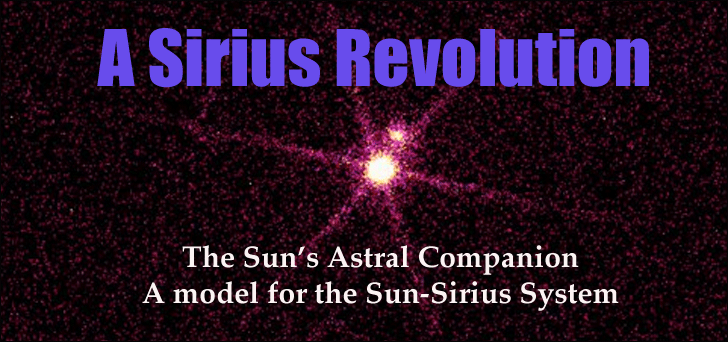
 By William Brown By William Brown
A Companion to our Sun?
The vast majority of observable stars are binary or multiple star systems. In these systems, two or more stars share a common focus of revolution and are gravitationally bound to each other in defined orbits. This is such a common observation such that the gravitational interaction of multiple stars appears to be the "normal" mode of stellar system formation.
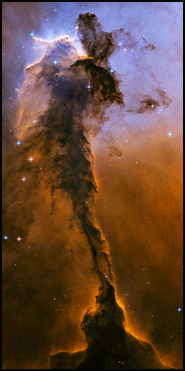 This is logical because stars are formed in nebulae that are "stellar nurseries" [right] where great conglomerates of light elements formed during the Big Bang while heavy elements were synthesized in the heart of giant, primordial stars, and were ejected upon their disruption. Special note should be made of the many complex organic compounds permeating such nebulae [1,2], because of the implications for cosmic biogenesis and panspermia -- theories which hold that life has an extrasolar origenesis. This is logical because stars are formed in nebulae that are "stellar nurseries" [right] where great conglomerates of light elements formed during the Big Bang while heavy elements were synthesized in the heart of giant, primordial stars, and were ejected upon their disruption. Special note should be made of the many complex organic compounds permeating such nebulae [1,2], because of the implications for cosmic biogenesis and panspermia -- theories which hold that life has an extrasolar origenesis.
The Spire [right]. This column of star forming material is 57 trillion miles long.
The close proximity of stars to each other upon formation clearly involves a high probability for gravitational binding, assuming that astral formations aren't directly driven by binary interactions (which could very well be the case). Intellectually this establishes the basis for a dual-star interaction within our Solar System. It is generally presumed that the Sun is a unique exception to this commonly observed phenomenon, however, observational evidence suggests that the Sun is moving in a defined orbit around a companion system of stars.
Evidence is plentiful for the support of a model involving the interaction of multiple stars in our solar system and will be presented in this article. Also, multiple flaws abound in the centuries-old models of heliocentricism that were formed before it was understood that the solar system moves through space.
Dark Star or Nemesis?
Is the idea of a solar companion to our Sun unprecedented? Not at all, in fact there have been numerous scientific publications examining the evidence for a "dark star", literally speaking, to which our Sun could be gravitationally bound in a definite orbit [3]. This alternate dark star is known as Nemesis, and its proposition comes primarily from observed perturbations of orbiting objects such as the planet-sized Kuiper belt object named Sedna [4].
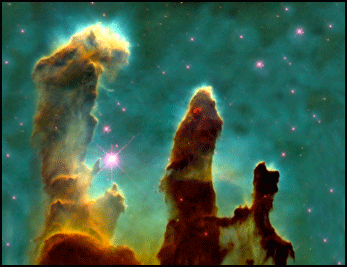
The Pllars of Creation - A Hubble Telescope image of the Eagle Nebula within the constellation Serpens. The light of super-massive stars can be seen shining forth.
Walter Cruttenden of the Binary Star research institute has propounded that a solar companion need not necessarily be of the "dark star" variety. Given the paucity of empirical observations and measurements of the movement of many of the bright stars within our own local galactic sector, it is with some justification that visible stars be examined to see if any may share a common focal point with our own Solar System [5]. At the heart of the poly-solar system theory is a simplification of the mechanics of constellation precession (precession observable) with a more logical model, one that does not rely on a putative wobble of the Earth but instead explains the precession observable with the movement of the Solar System itself.
| Precession
In astronomy, axial precession is a gravity-induced, slow and continuous change in the orientation of an astronomical body's rotational axis. In particular, it refers to the gradual shift in the orientation of Earth's axis of rotation, which, like a wobbling top, traces out a pair of cones joined at their apices in a cycle of approximately 26,000 years (called a Great or Platonic Year in astrology).
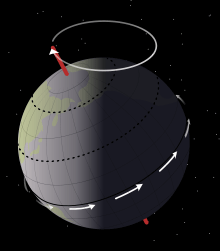 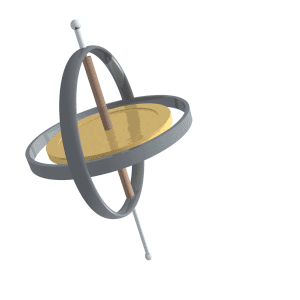
Earth's precession was historically called precession of the equinoxes because the equinoxes moved westward along the ecliptic relative to the fixed stars, opposite to the motion of the Sun along the ecliptic. This term is still used in non-technical discussions, that is, when detailed mathematics are absent. Historically, Hipparchus is credited with discovering precession of the equinoxes. The exact dates of his life are not known, but astronomical observations attributed to him by Ptolemy date from 147 BC to 127 BC.
The above video explains the Precession of Equinox and introduces some new and old theories.
|
Who is our Sun's twin?
Is there a candidate for binary revolution among the visible stars? Logically we could begin with the closest star to our own, which is Alpha Centauri. At a distance of 4.37 light years, it is the third brightest star and, as is common, it is itself a binary system.
Another star that shows evidence of being gravitationally bound within the system and is called Alpha Proxima. Alpha Proxima is 0.2 light years from Alpha Centauri AB, about 400 times the distance of Neptune's orbit from the Sun. This shows that a dual or poly star system does not have to necessarily be in close orbital interaction. However Alpha Centauri lies at a declination of -60°, which is well out of the plane of the Solar System, and as such, has a near circumpolar motion in the sky.
A more suitable candidate would be a star closer to the plane of the Solar System, or celestial equator. Sirius meets this criteria, at a declination of -17°. It is also the brightest star in the night sky, three times brighter than Alpha Centauri and twice as bright as the next brightest star Canopus. Sirius is also the 5th closest system of stars to our own [6]. More significant is the fact that The Sirius Research Group has been recording the position of Sirius for approximately 20 years now and has not recorded any measurable alteration in its location relative to the precession [7].
Imagine that you are holding hands with a friend, face to face. If you both began to spin around in a circle, your friend would appear to be stationary, while everything around them would appear to be spinning very rapidly. Your joined hands would be the focal point of the revolving motion. While the surrounding environment would not be spinning around, it would appear to be from you perspective.
This illustrates how the perception of both you and your friend can be very illusionary -- you see yourselves as relatively stationary while the background whirls around you. This is very similar to our situation with respect to observations of celestial motion between the Sun and its solar companions. Our observation of this phenomenon is more complex in that we must also factor in the orbital motion of the Earth and planets around the Sun.
Celestial bodies in our Solar System show harmonic resonance with the Sirius system. Pluto and Sedna are at an incline to the plane of the solar system of roughly 17°, the same as Sirius. Both have orbital periods of 250 years and 12,000 years, which are at 1:5 and 1:2 resonances with Sirius, respectively (12,000 years is roughly one half of the orbit of the Sun around Sirius, hence a 1:2 resonance).
Resonance is a criterion stipulated for any system of orbiting bodies, which is why planets and moons are often times tidally locked with their parent body, and is another reason why the hypothesis of a putative wobble is very unappealing. A wobble is indicative of dynamic instability, not harmonic resonance (think of a spinning top before it falls, it begins to wobble).
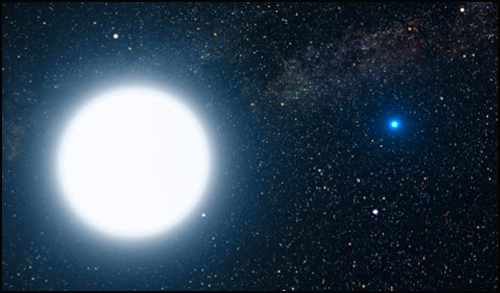
A Sirius Candidate
Sirius is a binary system. Sirius A is the highly visible star, but there is a companion known as Sirius B, first described in modern times by the Dogon tribe of Mali (Africa) and subsequently verified by the observational science of astronomers. The Dogon also described a third celestial body with characteristics of a neutron star. While a neutron wouldn't be visible in the same manner as Sirius B, the combined gravitational attraction of a neutron star, a white giant star and a white dwarf would certainly provide the gravitational force needed to keep the Sun bound at a distance of 8.6 light years. In fact, the presence of a neutron star is by no means necessary for the gravitational interaction of the Sun with Sirius.
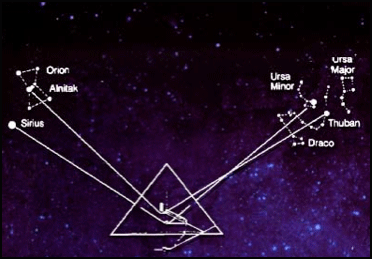
Historic and mythological descriptions of Sirius provides further insight into the nature of the relationship between the Sun and Sirius. A shaft leading from the Queens chamber of the Great Pyramid of Egypt was -- and still is -- aligned precisely with Sirius. Given the high probability that it was constructed that way, and considering that the pyramids form a star map in and of themselves, it shows how many epochs Sirius has been in a stationary position relative to the movement of the other stars.
When European philosophers first hypothesized that the Earth revolves around the Sun it was a radical and revolutionary idea of that era. Nicholas Copernicus developed the model and scientific explanation by which the Earth revolved around the Sun, and proponents of the model expounded it after its posthumous publication in 1543. The process of overturning the geocentric model of the Solar System, where the stationary Earth was at the center of the Universe, was not an easy venture and came to be known as the Copernican Revolution. Like most ideas that challenge the existing paradigm, it was not well received by most philosophers of the day. This is evident in the following discourse concerning a lecture given by Giordano Bruno at Oxford University for the Polish Prince Albert Alasco in 1583, (verbatim):
"When that Italian Didapper, who intituled himself Philotheus Iordanus Brunus Nolanus, magis elaborata Theologia Doctor, etc., with a name longer then his body, had in the traine of Alasco the Polish Duke, seene [sic] our University in the year 1583, his hart was on fire, to make himself by some worthy exploite, to become famous in that celebrious place. Not long after returning againe, when he had more boldly then wisely, got up into the highest place of our best and most renowned schoole, stripping up his sleeves like some juggler ... he undertook among very many other matters to set on foote the opinion of Copernicus, that the earth did goe round, and the heavens did stand still; wheras in truth it was his owne head which rather did run round, and his braines did not stand still..."[8]
As can be seen by this malicious retort, the best monds of Oxford did not consider the Copernican heliocentric model in the highest regards. Eventually with the development of science and its support of empirical observations, the Heliocentric model was adopted to explain the celestial mechanics of our Solar System.
Certain celestial movements could not be explained by the model however, such as the precession of the zodiacal constellations, whereby the stars associated with the constellations of the zodiac move retro-progressively across the sky over long epochs of time.
In precession there is a retrograde movement, which means that the stars of the Zodiac move backwards in relation to the overall progression of the celestial sphere. So while the Sun is observed to rise in a given constellation of the zodiac at a given date, say the constellation Pisces on the Spring Equinox of March 21st, over time it is observed that Pisces rises sooner and sooner each year. Eventually, after about 2150 years, the Sun is no longer rising in Pisces on March 21st, but is rising in a different constellation altogether, like Aquarius. This is a retro-progression because it is opposite of the apparent direction of the Sun within a single year, where the Sun moves in the opposite direction of the precession through the zodiacal band of stars, so from January to February the Sun appears to travel from Aquarius into Pisces.
This progression is due to the movement of the Earth around the Sun, and not the Sun around the Earth, as was purposed in the geocentric model. However the retro-progression cannot be explained by the movement of the Earth around the Sun, therefore, an additional revolving movement was introduced.
Since it was known that the Earth was tilted on its axis, it was hypothesized that the Earth wobbles around this axial tilt in a precise manner every 26,000 years. This would explain the precession of the Zodiac stars, as it takes about 2150 years for each Zodiac constellation to precede and there are 12 constellations (well there use to be until the introduction of the 13th constellation Ophiuchus into the Zodiac, which is a more harmonious configuration to the natural order) that equals approximately 26,000 years.
Problems with the wobble
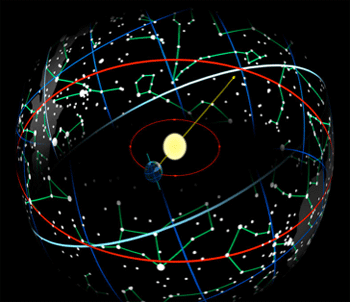 By what mechanism is a secondary retrograde rotation of the axis itself induced? The theory that was posited came to be known as Lunisolar Precession [right]. It was hypothesized that torque from the Sun and Moon supplied a force that perturbed the orientation of the axis, causing it to wobble. I call this the "Wobble Hypothesis". By what mechanism is a secondary retrograde rotation of the axis itself induced? The theory that was posited came to be known as Lunisolar Precession [right]. It was hypothesized that torque from the Sun and Moon supplied a force that perturbed the orientation of the axis, causing it to wobble. I call this the "Wobble Hypothesis".
When you take into account all the rotational motions and orbital paths of these three bodies (i.e. the Sun, Earth and Moon) it is staggering to think that a uniform force could be applied to generate a stable enough torque to maintain a 26,000 year periodicity through the precessional cycles.
It should be noted that this number -- 26,000 years -- is rounded off and is not a stable time-line for the precession. The actual precession proceeds with temporal fractionalization [9], where in measurements from 1900's to 1990 it increased from 25,800 years to 25,920 years. The phenomenon of temporal fractionalization, whereby time accelerates in fractals so that more cycles are fit into shorter periods, was well known to the Mayans and is an intrinsic part of their Calendars, regarded as some of the most accurate measurements of time to this day [10]. Furthermore the interactions of the numerous other celestial bodies of the solar system were not even considered, as well as the oblate geometry of the Earth, and as such the mathematical models have been continually altered in an attempt to manufacture a proper solution.
The history of the lunisolar precession model is one of problems, revisions, and the continuous addition of new inputs. Newtons' original equations did not work. d'Alembert, recognizing the earth was not a rigid body, made the first major changes, and many others since have added and changed dynamical inputs until the values have come very close to fitting the observable of approximately 50.3"p/y [50.3 arc seconds per year is a unit of astronomical measurement, it equals 30 degrees of precession about every 2000 years, 30 degrees being about equal to the diameter of the full moon]. The problem is that while current models are designed to closely approximate a fixed precession observable on a fixed date, the observed rate has been increasing at an increasing rate over the long term (100+ years), something that current models have been unable to predict. As predictability is a litmus test for the validity of a theory, the lunisolar theory is now undergoing increased scrutiny. [11]
This information by itself raises serious questions about the validity of the "Wobble Hypothesis". However the major flaw of this hypothesis comes from an examination of the static position of the star Sirius in relation to precession and its historical utilization as a marker for time in the Sothic Calendar of the Egyptians.

From Africa, where the Dogons live, the star Sirius disappears below the horizon and is out of sight for a couple of months; then it appears again on the morning of July 23, when it rises about one minute before the Sun. It appears bright ruby-red, just above the horizon, almost exactly due east. Sixty seconds later the Sun emerges. So you can see Sirius for just a moment, then it's gone. This is called the helical rising of Sirius, which was a very important moment for most of the ancient world, not just for the Dogons and Egypt.
This is the moment when Sirius and the Sun and the Earth are in a straight line across space. In Egypt, almost all the temples were aligned with this line, including the gaze of the Sphinx. Many of the temples had a tiny hole in the wall somewhere; then there would be another wall and another, going into some dim inner chamber. In that chamber there would be something like a cube or Golden Mean rectangle of granite sitting in the middle of the room with a little mark on it. At the moment of the heliacal rising of Sirius, a ruby-red light would strike the altar for a few seconds, which would begin their new year and the first day of the ancient Sothic calendar of Egypt. [12]
The periodicity of the helical rising of Sirius was such that the Egyptians based their calendar on it [right]. Every year for millennia the appearance os Sirius coincided with the flooding of the Nile, an event that remarakbly still happens to this day.
This fact alone betrays the blatant flaw in the current consensus model for the precession of the Zodiac. With the "Wobble Hypothesis", the Zodiac stars aren't actually moving; they are fixed in place. The apparent retrograde motion is only the result of the transient shift of the equinoxes. Therefore it receives it's much more common and well known description as "the Precession of the Equinoxes". In this consensus model, the equinoxes are occurring at different locations within the Earth's orbit around the Sun, and since they are occurring at different locations there is a different backdrop of stars.
The equinoxes and solstices are a function of the 23.6° tilt of the Earth's axis. When the tilt is facing the Sun, the Northern hemisphere is in summer because it is receiving more sunlight and there are more daylight hours -- the days are longer and the nights are shorter. When the tilt is away from the Sun, the Northern hemisphere is in winter. This is opposite for the Southern hemisphere. The midpoints between these two extremes are the equinoxes, where the length of day and night are equal.
The equinoxes retrogress because the tilt is changing its orientation to the Sun as it wobbles about. This causes the equinoxes, as well as the solstices to occur in different locations in the Earth€™s orbit [right]. The problem is that if the equinoxes and solstices were occurring at different locations then Sirius could not have a precise helical rising every July 23rd from the latitude of Egypt!
All of the equatorial backdrop of stars would retrogress with the wobble of the Earth, and thus Sirius would have a helical rising that regresses throughout the Year, occurring at all different seasons throughout the 26,000 year cycle (see figure 5). The only stars that would remain relatively fixed are those at the poles, although they would still have minor perturbations themselves. But his is not what is observed. As Jed Buchwald, professor of the history of science at Caltech, states:
"Sirius remains about the same distance from the equinoxes -- and so from the solstices -- throughout these many centuries, despite precession" [13].
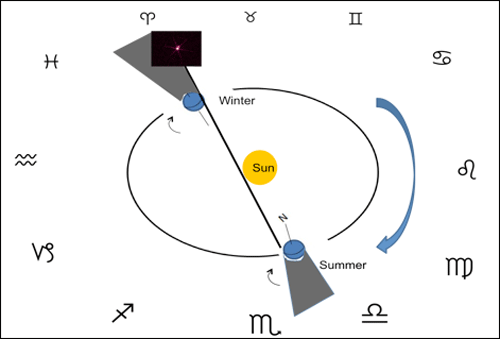
The Helical rising of Sirius in the summer, showing how the Sun and Sirius become aligned along the horizon of the Earth as it rotates into the light of the Sun. Similarly the Sun and Sirius are aligned in the winter as well, however, because Sirous is on the outside it appears directly above the Sun as it rises in the winter. This is the source of the Star of Bethlehem. It is the star Sirius.
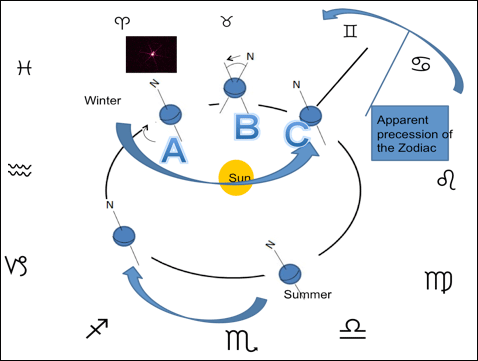
The Solstice would occur at A, but because of the retrograde wobble of the axis (b), winter now occurs at C.
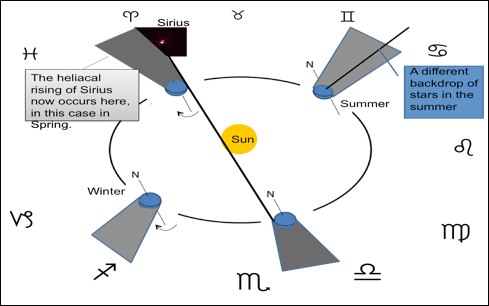
Figure 5: The wobble of the Earth's axis causes the seasons to occur at transient locations in the Earth's orbit during the cycle of the precession of the Zodiac. If the precession were due to the wobble, then Sirius would shift with the equatorial stars as well, and occur in a different season corresponding to the specific alignment.
These inconsistencies are resolved in the new precessional paradigm.
First off, the seasons do not regress with the precession of the Zodiac. They remain fixed in their location relative to the Sun. But not loci-static in the orbital revolution around Sirius. That is, seasons occur at different positions relative to Sirius (see figure 6). However the Sun's revolution around Sirius is so eccentric and long that perturbations in the position of Sirius are not perceived until the Sun reaches apastron. Apastron is the point in a star's orbit where it is furthest from its orbital companion, this is intrinsic to the nature of elliptical orbits. As the Sun revolves around Sirius, the zodiacal constellations shift location and appear to have a retro-progressional movement across the sky over epochs of time.

Figure 6: The Sun orbits around Sirius, and as it does so the backdrop of stars forming the Zodiac constellations change location. However the location of these seasons occur at the same position within the Earth's orbit around the Sun.
As the Sun passes through the apastron points approximately every 13,000 years, Sirius would indeed appear to have a precessional migration across the sky, until eventually the heliacal rising would occur in the winter (see figure 7). And this is fine, because it does not violate any historical recordings of the behavior of Sirius. In fact, a review of the highly advanced Babylonian astronomy shows that this was actually described.
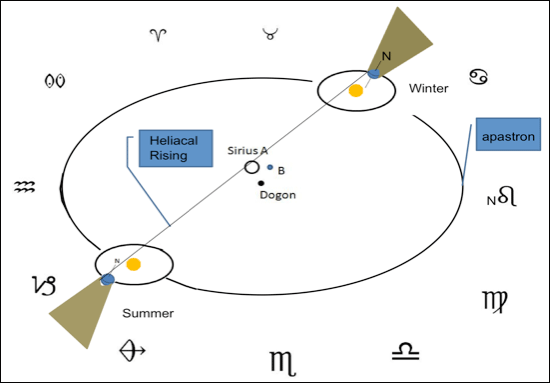
Figure 7: The term Nibiru is well known, and equally misunderstood. The Babylonians used it more as a descriptive term than a name representing a specific object. In Babylonian Astronomy it was used to describe a star -- not a planet -- as can be seen in the following examples from translations by Horowitz [14]: The Helical rising of Sirius as the Sun orbits it. Since the location of the solstices and the equinoxes are occurring at the same location within the Earth's orbit around the Sun, the helical rising is switched when the Sun reaches the opposite point in its orbit.
* He [Marduk in context] set fast the position of Nibiru to fix their [the stars] bounds."
*"...let Nibiru be the holder of the crossing place of the heaven and of the earth."
*...the red star which stands in the south after the gods of the night [the stars] have been finished, dividing the sky in half, this star is Nibiru, (i.e., Marduk)." (note it's a red star, and this is often how the Ancients described Sirius)
* "Nibiru is his [marduk's in context] star, which he made appear in the heavens ... The stars of heaven, let him [Nibiru] set their course; let him shepherd all the gods like sheep."
What can be seen clearly here is that the term nibiru is being used to describe a star, that this star sets the course of the other stars, that is to say that it is the source of their precession, and that it is the crossing point.
It is my supposition that Nibiru is referred to as a "crossing point" because when the Sun passed apastron and began its opposite revolution, Sirius would cross the sky. Not only did this crossing of Sirius mark the turning point in the Sun's orbit, but also the turning point in the Yuga cycles.
The new Sun-Sirius system model satisfies the observational behavior of Sirius and the constellations of the zodiac as they regress throughout the great cycle of 26,000 years. There is no need to introduce a "wobble" in the Earth's axis, induced by the action of 9 other celestial bodies -- a theory which is just a relic from a time when the motion of the Solar System was not yet conceived.
It would be sagacious not to place Sirius at the center of the Solar System, for in a fractal system there is no true center. The fractal nature of the Universe engenders its self-arrangement, or more apropos, the Universe is a holofractal graphic system [15]. Therefore there are many nested orbital interactions, going out as far as the local cluster of galaxies, which themselves have a focal point.
This is nothing new. Previous civilizations understood celestial mechanics at an advanced level, and the mathematical precision of their astronomical observations is a testament to this [16]. The reason why the Egyptians and many other civilizations of that era used Sirius as their marker for the passage of time is because they picked the most stable object as their reference point.
We choose the Sun as our reference point, and this is obviously highly inaccurate. Every 4 years a day has to be added to keep accurate time. But even Sirius was not accurate enough for the "Keeper's of Time", the Mayans. With their remarkably advanced astronomy they quickly detected the inaccuracies in using Sirius as a marker for the passage of time, and switched to an even more accurate cycle involving the Pleiades. There is however an even more stable reference point than the Pleiades and that is the Galactic center, which from the perspective of our galaxy is the ultimate center of rotation.
And indeed the Mayan's chose the Galactic Center as a reference point to mark the passage of time, which is evident as the Mayan Long Count ends with the galactic alignment of the Solar System on December 21st 2012. Therefore, the idea that the Earth orbits the Sun, or that the Sun orbits Sirius, or that Sirius orbits Alcyone and that Alcyone orbits the Galactic Nucleus, is not revolutionary -- it's just a rediscovery of lost knowledge.
|
|
|
|
|
|
Grandísimo Gurú burbujista
|
|
Fecha de Ingreso: 07-abril-2008
Ubicación: Cerca de mi casa
Mensajes: 3.544
Gracias: 6.973
3.247 Agradecimientos de 1.501 mensajes
Ignorar usuario para siempre
|
|
Más fuego a la pira sacrificial.......  georgia guidestones fueron construidas/encargadas Junio 1979 - Diciembre 2012 33 1/2 años - la edad de cristo  American Stonehenge: Monumental Instructions for the Post-Apocalypse American Stonehenge: Monumental Instructions for the Post-Apocalypse
 |
Click para ampliar |
 American Stonehenge: Monumental Instructions for the Post-Apocalypse American Stonehenge: Monumental Instructions for the Post-Apocalypse"The story of the Georgia Guidestones began on a Friday afternoon in June 1979, when an elegant gray-haired gentleman showed up in Elbert County, made his way to the offices of Elberton Granite Finishing, and introduced himself as Robert C. Christian. He claimed to represent "a small group of loyal Americans" who had been planning the installation of an unusually large and complex stone monument. Christian had come to Elberton—the county seat and the granite capital of the world—because he believed its quarries produced the finest stone on the planet."
 |
Click para ampliar |
  Weidner also has a theory about the purpose of the Guidestones. An authority on the hermetic and alchemical traditions that spawned the Rosicrucians, he believes that for generations the group has been passing down knowledge of a solar cycle that climaxes every 13,000 years. During this culmination, outsize coronal mass ejections are supposed to devastate Earth. Meanwhile, the shadowy organization behind the Guidestones is now orchestrating a "planetary chaos," Weidner believes, that began with the recent collapse of the US financial system and will result eventually in major disruptions of oil and food supplies, mass riots, and ethnic wars worldwide, all leading up to the Big Event on December 21, 2012. "They want to get the population down," Weidner says, "and this is what they think will do it. The Guidestones are there to instruct the survivors."
 |
Click para ampliar |
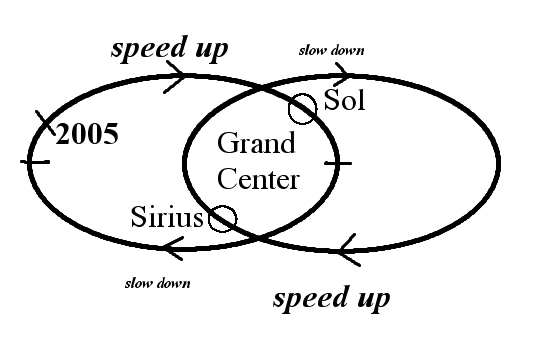 Many Deep Deep Deep Secrets...... - Esoteric Online Many Deep Deep Deep Secrets...... - Esoteric OnlineGalactic Shift Galactic Shift of the Ages
 |
Click para ampliar |
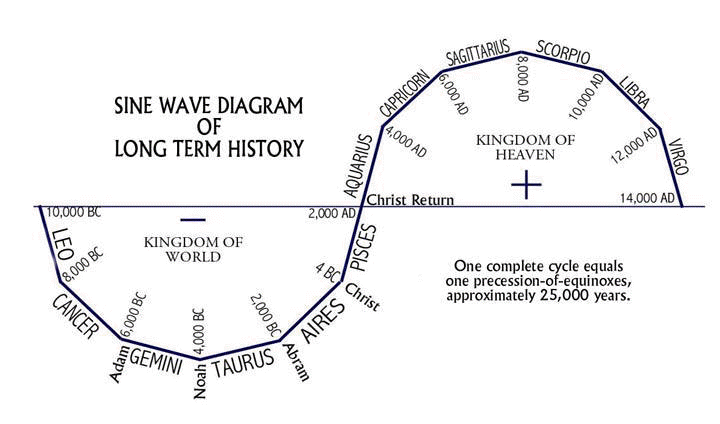 1 "great age" 25920 -> 12960 años Hubo un cataclismo sobre el 10.000 AC? Hace 13.000 años? Cada vez que pasamos de la noche al dia, y del dia a la noche en este ciclo? "All over the world in every native culture you will find stories of a Great Flood and the Sumerian Tablets are no different. Sitchin says they tell how the Anunnaki left the planet in flying craft, as an enormous surge of water wiped out much of humanity. There is no doubt that an unimaginable catastrophe, or more likely catastrophes, were visited upon the Earth between approximately 11,000 and 4,000 BC. The geological and biological evidence is overwhelming in its support of the countless stories and traditions which describe such events. They come from Europe, Scandinavia, Russia, Africa, throughout the American continent, Australia, New Zealand, Asia, China, Japan and the Middle East. Everywhere. Some speak of great heat which boiled the sea; of mountains breathing fire; the disappearance of the Sun and Moon and the darkness that followed; the raining down of blood, ice and rock; the Earth flipping over; the sky falling; the rising and sinking of land; the loss of a great continent; the coming of the ice; and virtually all of them describe a fantastic flood, a wall of water, which swept across the Earth" |
|
|
|
|
|
|
Excelentísimo, ilustrísimo y grandísimo miembro de élite de los gurús burbujistas
|
|
|
|
¿Se puede establecer una relación de los giros del giróscopo con este gráfico? ¿cada cuantos años cambiaría de polos la Tierra? si lo que hacen es copiar el efecto del giróscopo, entonces los polos magnéticos describirían un leve giro, el opuesto y después cambiarían de polaridad.
 |
Click para ampliar |
 ¿Podrían estar engañandonos? lo digo porque a parte de parecer algo muy extendido simbológicamente, se pueden realizar montones de modelos matemáticos que nos den los mismos resultados de un 9-11, 3-11, 6/9,.. De todas formas la caída de las torres tampoco es que fuese algo glorioso, olía a conspiración un mes antes, lo sabía Bill (William) Cooper. Se engaño a muchos pero no a todos. Pero con lo del Elenin ando muy escamao. Incluso "jugué" con el programa propulsor de la NASA para ver la trayectoria y la situación del cometa en cada día, y las alineaciones con el resto de planetas. Estos jesuitas son muy listos  Salud |
|
|
|
|
|
La sonda Voyager esta fuera del sistema solar probablemente pueda enviar imagenes interesante pero no creo esten disponibles.
Pero como sabemos donde estamos ? por la precesion de los equinoccios, el solsticio de verano marca la posicion del sol en la galaxia, por ello San Juan que es Oannes el pez Sumerio, las hogueras, y el año Mason.
Donde estamos ahora ? terminando Geminis e ingresando a Tauro, hacemos la cruz a 90 grados a la izquierda y obtenemos el fin de la era de Piscis y el ingreso a la era de Acuario.
Por ello el Toro - Baal el Señor, Bel, Bull, al cual se le sacrificaban y sacrifican los niños.
 |
Click para ampliar |
|
|
|
|
|
|
Grandísimo Gurú burbujista
|
|
Fecha de Ingreso: 07-abril-2008
Ubicación: Cerca de mi casa
Mensajes: 3.544
Gracias: 6.973
3.247 Agradecimientos de 1.501 mensajes
Ignorar usuario para siempre
|
|
Iniciado por IndigoMerovingio  Yo no lo llamo, se trata del codigo del nacimiento de Jesus.
Si Bel-en como ya hemos mencionado, en los cuernos del Toro, como bien alguien acoto la definicion numero 7 de la Real academia es el espacio comprendido entre los cuernos de la res Bovina, 7 es el codigo mon.
Ahora, si representa al Anticristo o al verdadero Cristo salvador lo podemos discutir, yo creo que el proceso de la singularidad representa a ambos por lo tanto es ambiguo, si bien trae muerte y desolación del otro lado puede haber un paraiso como bien expresan los grabados alquimistas de por ejemplo Jacob Boheme.
Cat-ar-sis quiere decir purificacion, otra vez el gato, simil a la palabra Cataro, los puros, con una terminacion que podria referir a Isis la Diosa.
Catarsis (del griego κάθαρσις kátharsis, purificación.
Todo parece indicar segun los codigos esotericos que se trata de una depuracion de las almas, pero aqui ya estamos entrando en un terreno muy subjetivo por lo tanto no hago mas que dar un punto de vista perceptivo del acontecimiento.
Es evidente que los adoradores del Diablo son los que actualmente saben del acontecimiento y han tomado por lo tanto las debidas precauciones y lo pretenden utilizar para su fin de dominio, los Cataros tambien los sabían y lo veian desde otro punto de vista, por lo tanto todo depende del crist-al con que se mire.

Simbolismo Cataro con el toro y la serpiente
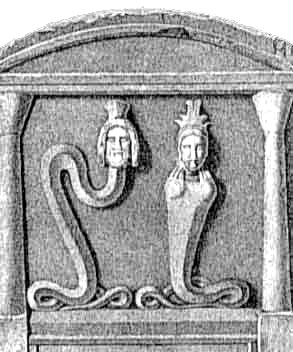
.
La señal de paso (ignición)
 |
Click para ampliar |
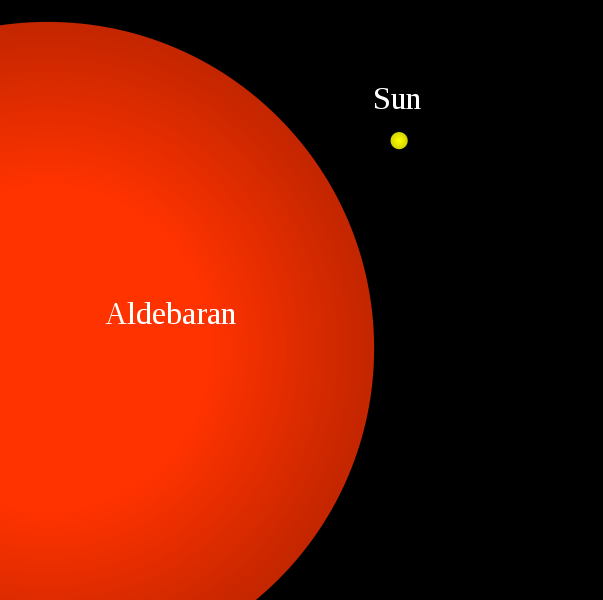 ALDEBARAN y su "mal de ojo" 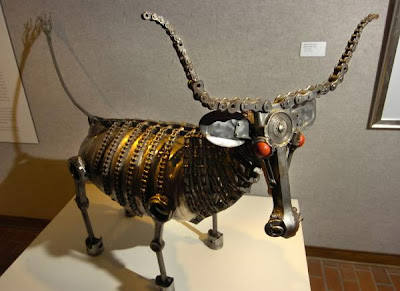 Seguro que los colores no son casualidad 
 |
Click para ampliar |
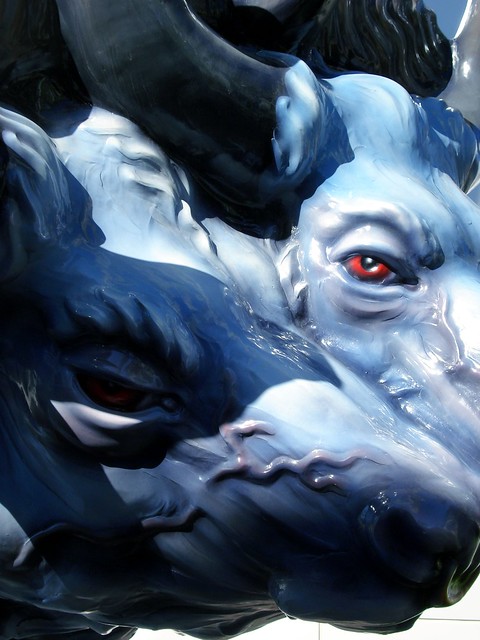 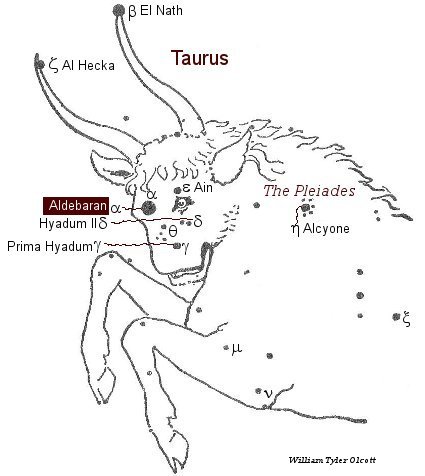 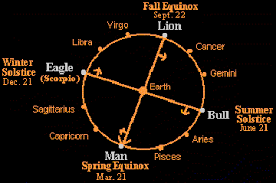
 |
Click para ampliar |
 "Note that in the sky, the pertinent constellations form a portrait; a battle in the sky with Orion a hunter containing the star Betelgeuse facing the bull Taurus, containing the star Aldebaren and the Hyades star cluster. At Orion's back stand Sirius and the two Hounds Canis Major and Canis Minor, and further behind them the constellation Argo. Aldebaren forms a red eye for the bull. The girdle of Orion has 3 linearly placed stars. One may view this as Orion the hunter attacking the Hyades, backed by hunting hounds and the great shapeless hundred-eyed Argus monster or the single eyed Canopus with a hundred limbs. This is very suggestive in terms of the Cthulhu Mythos: in "Trail of Cthulhu: House on Curwin Street" Hastur the Unspeakable shall return from the dark star which is in the Hyades near Aldebaren. In Chambers "The King in Yellow: The Yellow sign" ...when from Carcosa, the Hyades, Hastur and Aldebaren. Betelgeuse is given by the CM as the seat of the Elder Gods (they battle the CM entities). " http://www.satanicreds.org/satanicreds/sirius.htmlNo sé adónde lleva todo esto........  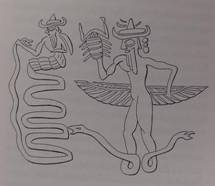
|
|
|
|
 Primeira Primeira
 Anterior
96 a 110 de 170
Seguinte Anterior
96 a 110 de 170
Seguinte Última
Última
|

